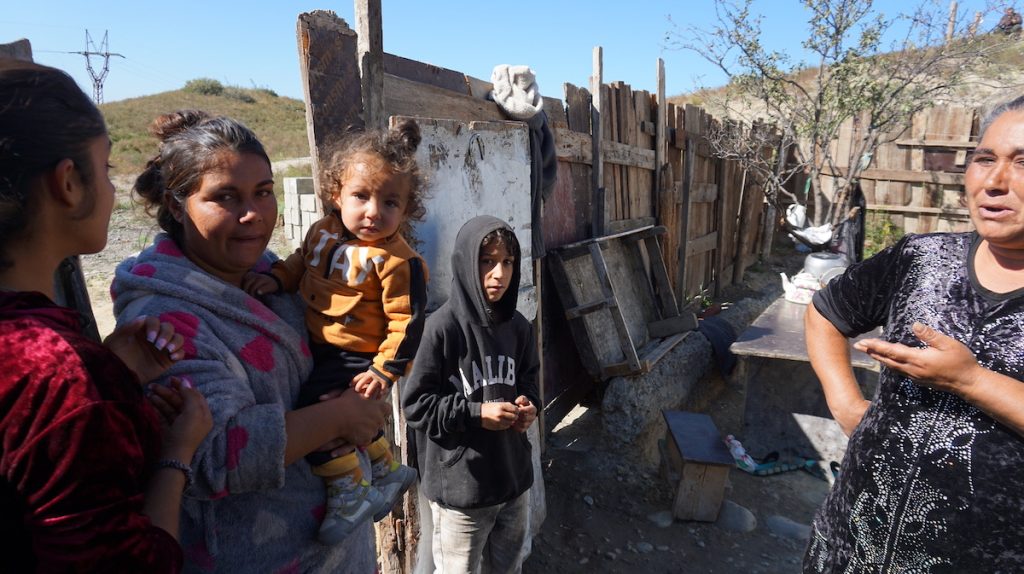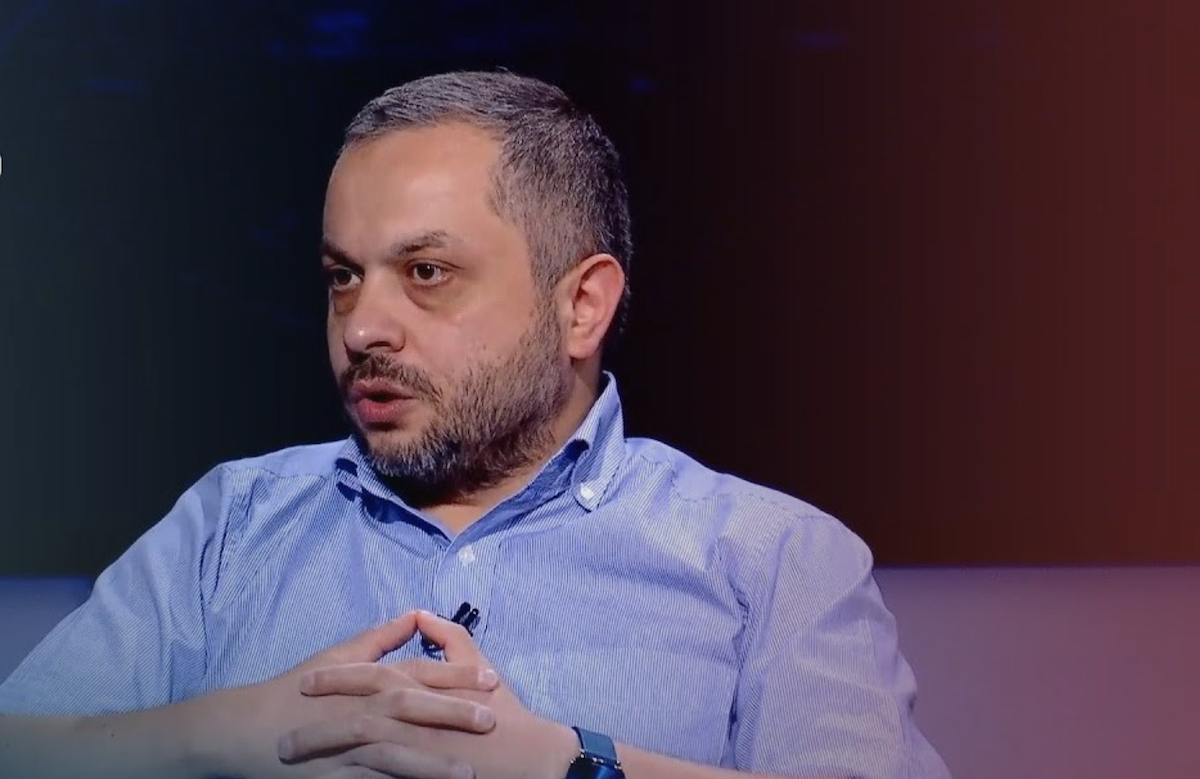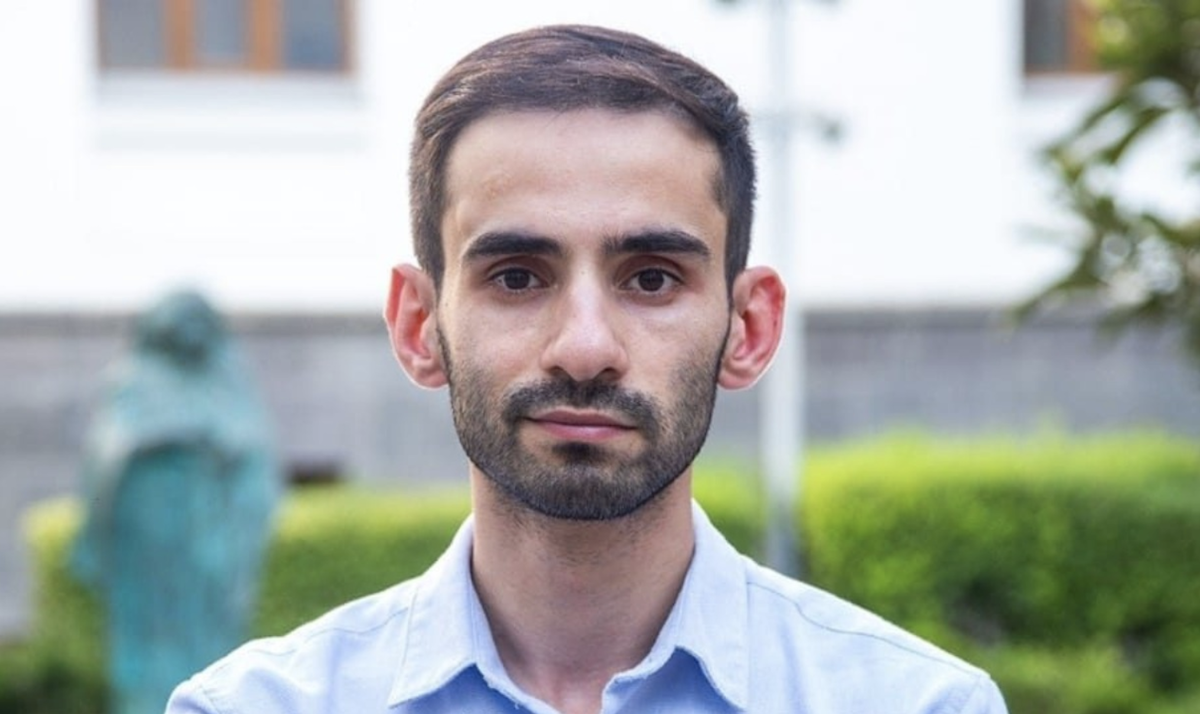Roma in Georgia. How the most marginalized group in the country lives
Roma are the most marginalized and invisible group in the public life of Georgia. They do not study in higher educational institutions and never hold positions in private or public institutions. Most often you will meet Roma on the streets, and they have faced discrimination for decades.
___________________________________________________________
Fortune-telling, selling trinkets, dancing, singing, begging, and, more recently, washing the windows of cars stopped at traffic lights – all of this is associated with Roma in Georgia.
Officially, 604 Roma live in Georgia, but these figures do not correspond to reality. The Institute for Tolerance and Diversity notes that, according to the statistics of non-governmental organizations, their number is much higher and may reach three thousand.
Roma in Georgia live mainly in Tbilisi, Batumi, Kutaisi, Kobuleti, Telavi and Gardabani.
For centuries the Roma have led a nomadic lifestyle that has shaped their traditions and become part of their identity.
The Roma came to Georgia in the 19th century, and now there are several branches of Roma living here. After World War II, their number increased as Roma from Ukraine and Russia migrated. Their descendants remain here today. Most of them have Ukrainian and Russian surnames.
According to the Center for Tolerance, the Roma encountered on the streets belong to the “Dom” branch. Their language, religion and culture are different from other Roma. Often the other Roma do not even perceive them as part of their community. Roma of this branch also come to Georgia seasonally from Azerbaijan.
Anastasia: “I have never been to a café or a movie theater”
There are several Roma settlements in the municipality of Gardabani. We visited two of them – the village of Agtaklya and the so-called “Noah’s neighborhood”.
There are many school-aged children in the village of Agtaklya. You can hear noise and laughter, children playing in the courtyards.
Strangers are a rarity here, and our appearance arouses wary interest.
Anastasia Abdulaeva, 24, is a gypsy. She was 14 years old when she got married. She tells us that although she and her fiancé loved each other, he “kidnapped” her according to Romani custom.
At the age of 16 she had her first child and soon had her second. Now Anastasia is a mother of four children.
The walls of the one-story house where Anastasia’s family lives are covered with cracks:
“Every night we sleep in fear. Our house is next to the railroad tracks, and every time a train passes by, the walls shake. We live here with our children, we have nowhere to go.”
As Anastasia talks to us, her little daughter Maria stays close to her. But at some point, the girl disappears and returns wearing a new blouse.
“She wants to look pretty in the photos,” Anastasia laughs.
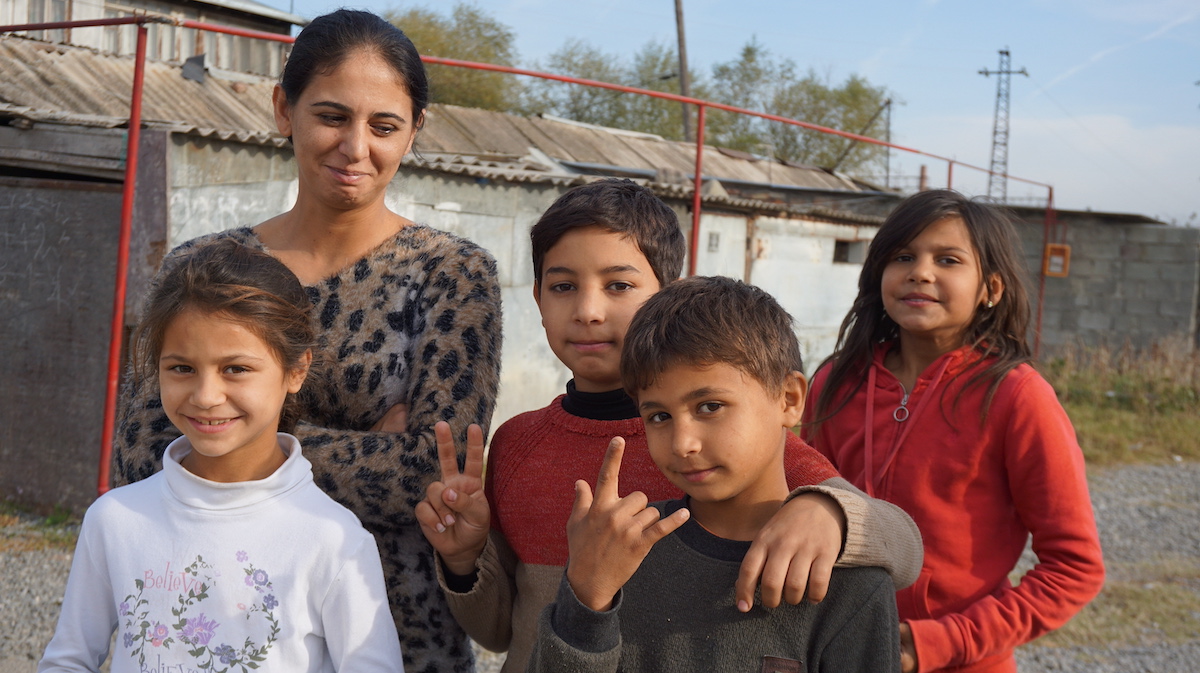
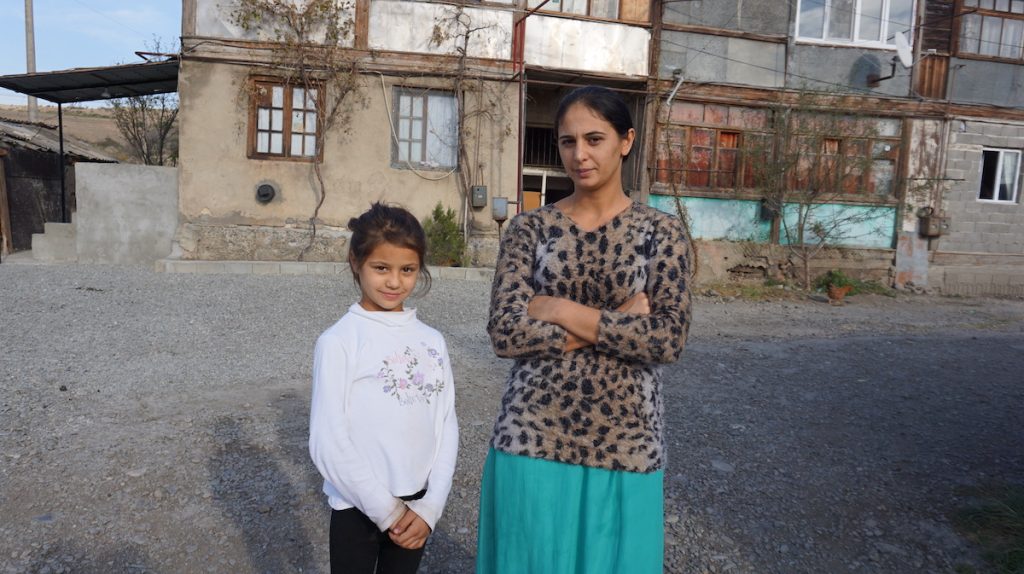
Anastasia’s husband works as a porter at the Lilo market in Tbilisi. It is an unstable income – there are days when he brings home almost nothing. The family also receives social payments, but there is still not enough money to feed their four children:
“The children are always hungry. We never have enough money for food and clothes,” says Anastasia.
In her 24 years of life Anastasia has never been to a café, movie theater or other entertainment venue. Sometimes other Roma invite them to Gardabani or Rustavi for a holiday or birthday party. Several times she has traveled to Tbilisi.
Neither Anastasia nor her husband attended school. This is a common story for Roma. Most Georgian Roma cannot read and write and often put a cross instead of a signature.
However, this trend is gradually changing.
Anastasia wants her children to study, but getting out of poverty and providing her children with a better future is not an easy task.
Some children in Agtaklya village do not go to school at all, while others have to travel to a neighboring village to do so.
“The driver asked us for 300 GEL [about $112] to take the children to school in Rustavi. Where do we get this money from? So we get up very early in the morning, go to the bus station and drive to Rustavi for 50 tetri. I stand outside the school until three o’clock, wait for the children, and then bring them home. And so every day,” Anastasia says.
Children want to dance and go to other circles, but parents do not have money for it:
“I want them to learn English well, but we can’t afford it. The only thing that makes me happy is that they still go to school. Unlike us, they will have an education.”
Why education is a problem for the Roma community
Lack of access to the education system is a serious problem for Roma.
For many years, most Romani children did not go to school. For various reasons, including the fact that they did not realize the importance of education. Each new generation grew up seeing that neither their parents nor their parents’ parents had ever studied.
Social and material obstacles also stood in the way of education. In the Bashevam Romani community, children were often sent to the streets to beg for alms instead of going to school, or left at home to look after younger siblings while their parents earned a living.

These problems remain unsolved to this day. Moreover, the problem with documents has been added to them.
Nargiz Jincharadze has been the director of public school No. 5 in the city of Kobuleti since 2006, and she also heads a non-governmental organization that aims to increase access to education for Roma.
She created this organization after she became director of the school and discovered that Roma living in Kobuleti were not going to school at all:
“Their names were on the list of students, but in reality these children did not go to school. When we started compiling the database and entering the personal numbers of the pupils into it, these names disappeared. Because these children have no documents.”
After that, they started to draw up documents for the Roma living in Kobuleti. The first Roma pupil was enrolled in School No. 5 in 2007.
“The following year we already had three pupils, then six. Mass enrollment started in 2010-2011, and now we have 76 Roma pupils,” Nargiz Jincharadze, whose school has a total of about 330 pupils, says.
In recent years, registration has been required before a child can enroll in the school. Jincharadze says this is also a problem for the Roma community. Some parents do not know Georgian and therefore cannot cope with the registration procedure:
“I break all the laws, take their ID card and even their phone, because a code has to be sent to it, and register the child. We say that everyone can register, but this is not the case.”
Kobuleti is one of the largest Roma settlements in Georgia. About 30 families live here, totaling about 400 people. At the same time, Roma in Kobuleti have better living conditions and are more integrated than in other regions of the country.
Despite this, some Roma children from Kobuleti have never attended school.
Barracks made of construction waste
Alexandra Petrenko, 50, has spent her entire life in the village of Agtaklya. For the last 12 years she has been beating the thresholds of various institutions in a vain attempt to privatize her house.
Many members of the Roma community experience housing problems. The vast majority of them live either in barracks built of second-hand materials or in rented apartments.
The Roma settlement in the village of Agtaklya consists of one three-story building and small barrack-type houses. The walls of these houses are made of construction debris, the roofs are covered with fragments of tiles and pieces of metal found at different times in different places. Wind and rain are felt in these houses as much as outside.
The barracks have no floors, the bed, table and other furniture stand directly on the ground. Dampness, cold and reptiles are part of daily life here. There is also no sewage system or drinking water. Toilet booths made of plywood stand in the middle of the field, far from the houses.

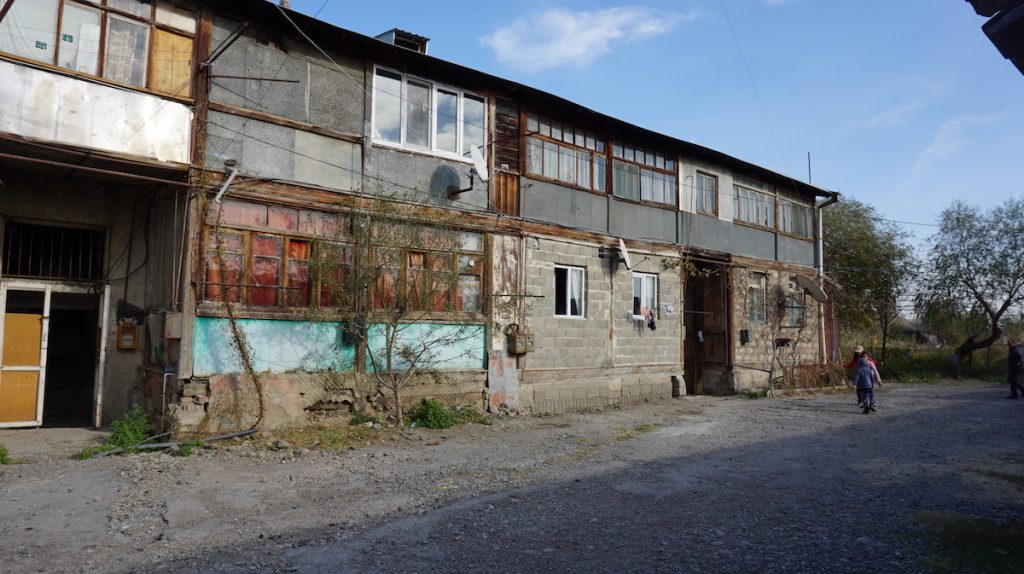
Christina Petrenko lives in Agtaklya with her three children and her retired mother-in-law. The walls of their house are damp, and instead of bed legs there are bricks stacked on top of each other.
On the table are several dishes. Christina opens their lids and reveals that she has nothing in the house but pasta, which she will make the children for dinner tonight. Most frightening of all is the approach of winter, when the heating problem will be added to the thousands of other worries.
One of Christina’s children has special needs:
“He is 18 years old and has autism. I am asking for housing for my children. But I don’t even know Georgian, I don’t know what to do, who to turn to.
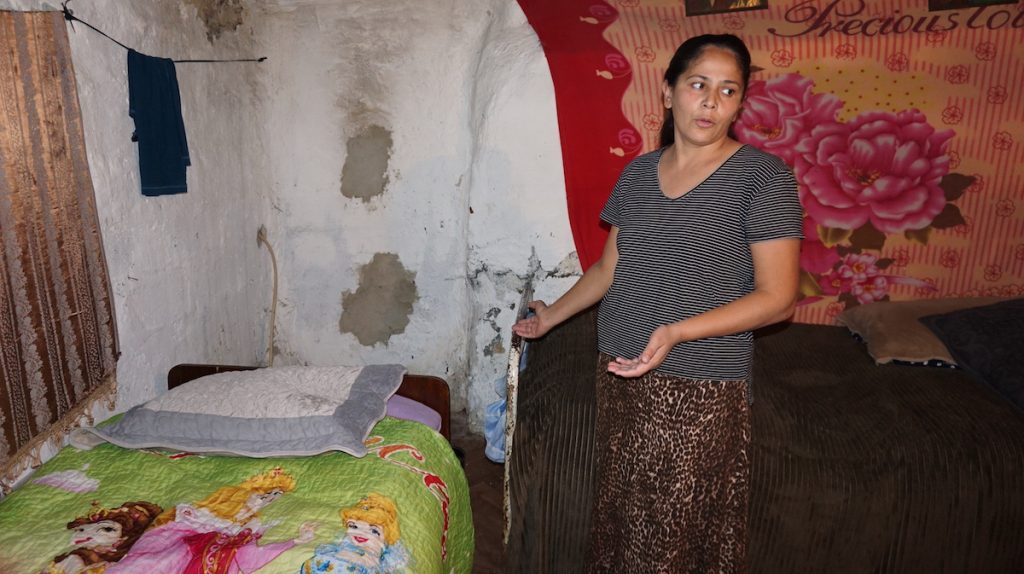

Christina herself is also struggling with a chronic disease. She buys the necessary medicines through the local government’s social assistance program. She is grateful to the authorities for this, but says that the help they receive is not enough.
The housing issue is also acute in other Roma settlements.
In the “Noah’s Neighborhood” in Gardabani, several small houses are being built. Nino Yunenko, 22, is eagerly awaiting the completion of construction so that she and her two children can move into a one-room house on a hill.
“We need building materials. If we finish it before winter, we will have shelter,” Nino says.
Kobuleti Roma also have a housing problem. Unlike in Gardabani, most live in rented apartments.
“Almost all of them are included in the base of socially unprotected people and receive assistance, but this money is not enough even to rent an apartment. I say at every opportunity that if the state built one five-story social house for these people, their quality of life would change a lot and they would have money for education,” Nargiz Jinchveladze maintains.
“Our poverty is endless.” Lida
Unlike in Agtakli, in Noah’s Neighborhood we are greeted with distrust. They say “someone” has come many times, wrote down their problems, but nothing changed.
A small water channel runs next to the houses, in which a few ducks swim. There are loud voices coming from the houses. At our appearance, curious children and young people come out in groups.
The people here express satisfaction with the government and complain of poverty.
“Our poverty is endless,” says Lida Disnenko, an elderly woman who lives with her six children in a single room built, or rather unfinished, from what they have managed to pick up here and there. The thin wooden walls cannot protect her from the winter cold.
“I really need blocks, a roof, a floor. Maybe someone can help me with the materials. I have to make it before winter, I have six children, we will freeze.”
A few years ago, a small business opened in “Noevo District” that uses flammable raw materials, so the Roma are forbidden to light fires in their yards. However, they do not protest because the administration of the enterprise has built an access road to the settlement.
The only thing they tell us about here with hope and pride are the children. A new generation that is going to school.
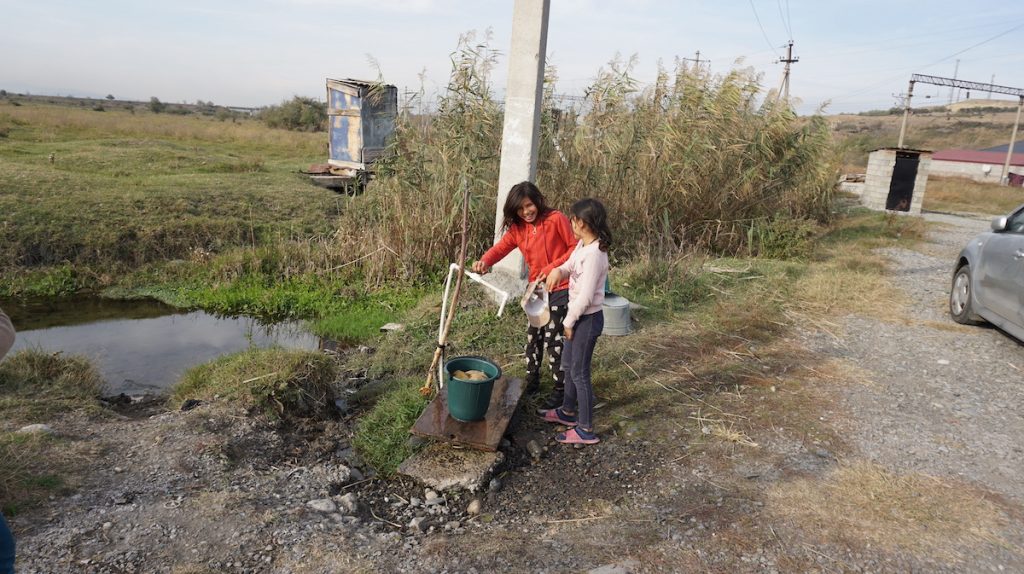
“I want my son to be literate, unlike me, he will have a different life,” Nino says.
“Poverty and unemployment, as well as isolation and lack of access to various services, are the most important problems for this community,” explains Giorgi Sordia, head of the Center for the Study of Ethnicity and Multiculturalism.
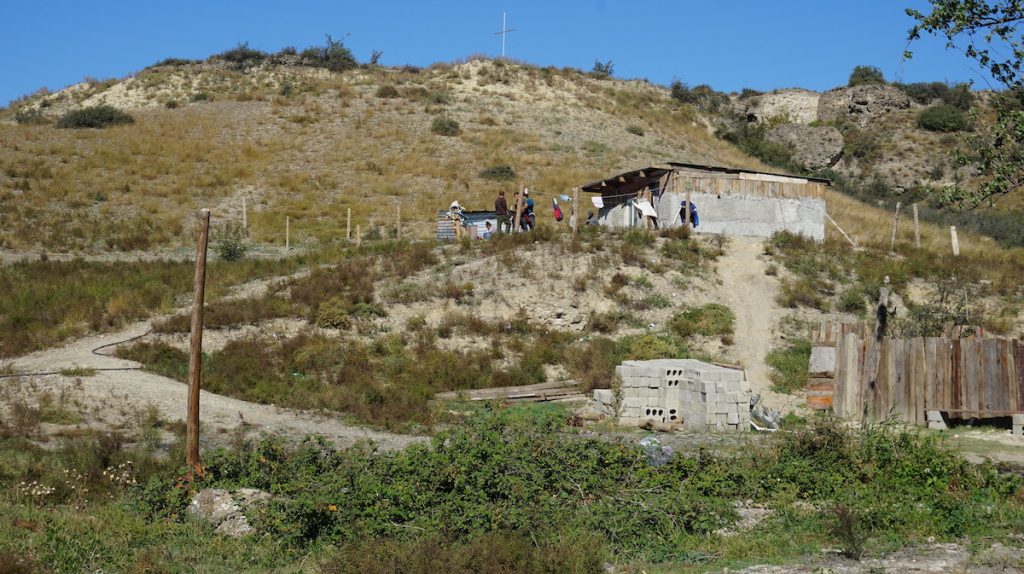
Giorgi Sordia has been researching the problems of the Roma community since 2005.
“They have no profession, they cannot get secondary education, they do not study in higher education institutions at all. They are forced to look for hard work, which is poorly paid. So they are engaged in petty trade, previously men used to turn in scrap metal. Some ask for allowance,” he says.
What do Roma need to escape poverty?
Nargiz Jincharadze says that although the problems of the Roma community are very complex, access to education and solving the housing issue could make a big difference:
“Education, health care, public services – all this is a problem for them because they don’t know the state language. People over 40 have poor command of Georgian and Russian and cannot get information. Everything hinges on education, if we give them the opportunity to study and socialize, the rest of the problems will also be solved.”
According to her, the attitude of those young parents who studied on their own or participated in various projects has already changed a lot:
“They try to help their children, borrow money to hire tutors. But these are isolated cases.”
This is also evidenced by unofficial statistics. For example, none of Nargiz’s Roma students went on to higher education. Only one boy entered the Naval School.
Society’s attitude must also change, Nargiz believes:
“We had several cases, we trained them to be bartenders, but they still felt rejected, couldn’t stand it, gave up this profession and left.”
“There is a widespread stereotypical attitude in society, they have formed a very negative image,” Georgi Sordia says.
He adds that not everyone who asks for alms on the street is a Roma, and Roma are not always pickpockets.
“This is the only community in Georgia that is so isolated and marginalized,” Sordia laments.
Nargiz Jincharadze confirms this as well:
“The Kobuleti district is mixed, with many ethnic groups living there, but only the Roma are isolated from the community. Children are more tolerant, but the attitude of parents is still negative. It’s just that while before it could be expressed in an aggressive form, for example, ‘I will transfer my child to another school, I don’t want a Roma to study with my son’, now they don’t say it out loud anymore.”
In her opinion, education would also help to solve many health problems. Although the picture has more or less changed compared to the 1990s, home births still happen among Roma:
“This year there were three school-age children did not have birth certificates because they were born at home. It took us a lot of effort to correct this.”
What does the state do?
“The state recognizes the existence of Roma,” says Giorgi Sordia, explaining that many years ago the “state strategy for civil equality and integration” did not mention Roma at all, the state did not notice or take them into account.
“Later, as a result of the involvement of NGOs and Roma themselves, this group was nevertheless included in the document. One of the issues of this strategy is the problem of small and marginalized groups, and in this context Roma will be considered first and foremost.”
Indeed, the “State Strategy for Civic Equality and Inclusion 2021-2030” has an entry on Roma.
The document lists all the problems faced by the community: minimal involvement in social programs and public life, problems with education, home births, lack of birth certificates. Mention is made of the need to find out the exact size of the Roma population and to prepare official statistics that will make it possible to “define concrete actions adapted to the needs of the community and oriented towards results.”
But in practice, all this has not yet been done.
“It’s been 20 years since we started discussing this topic, and there are no tangible results,” Giorgi Sordia says.
